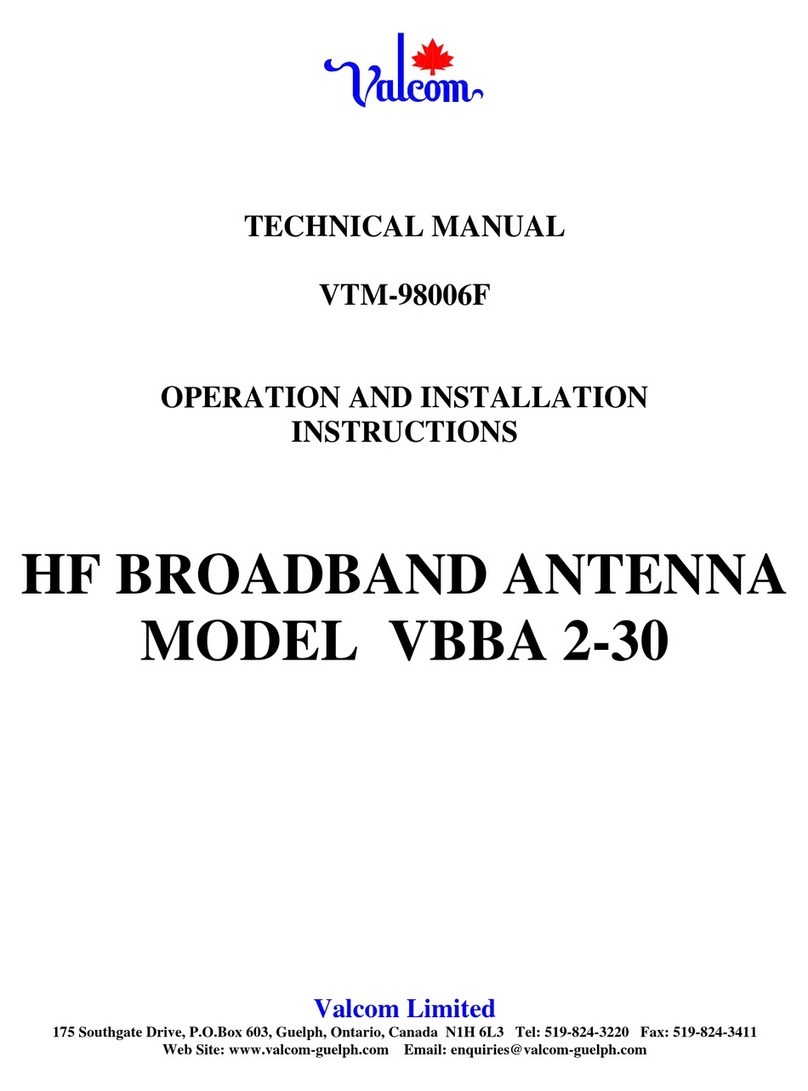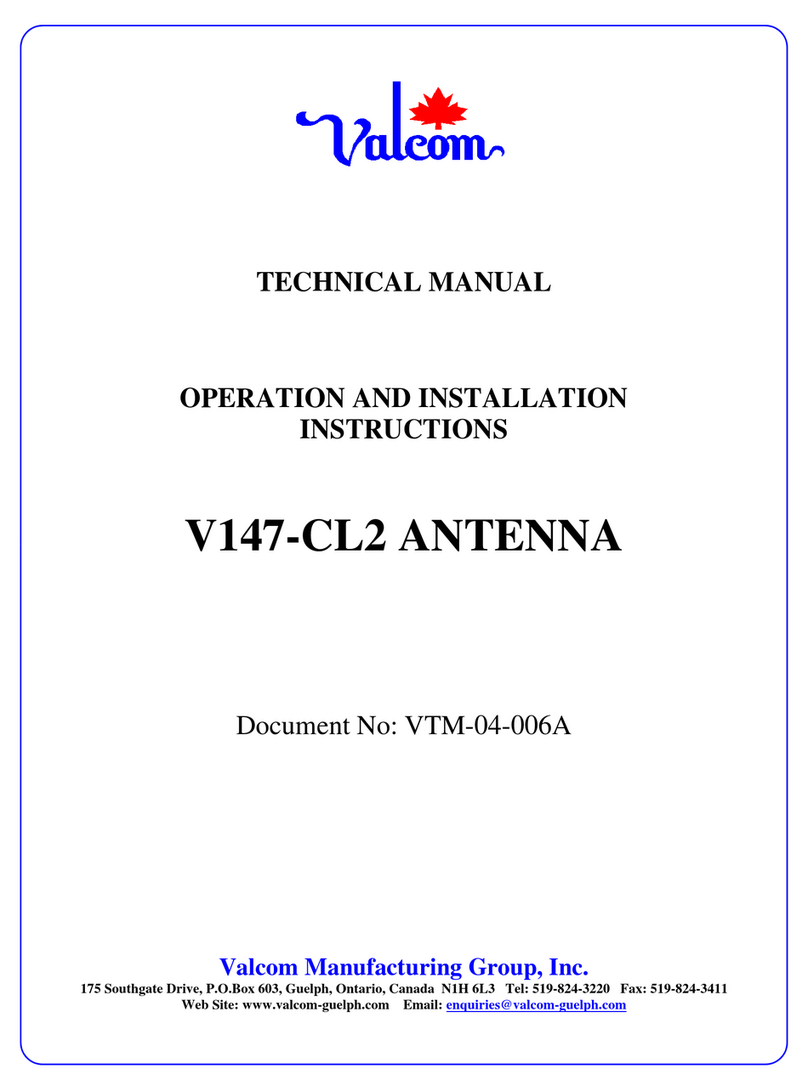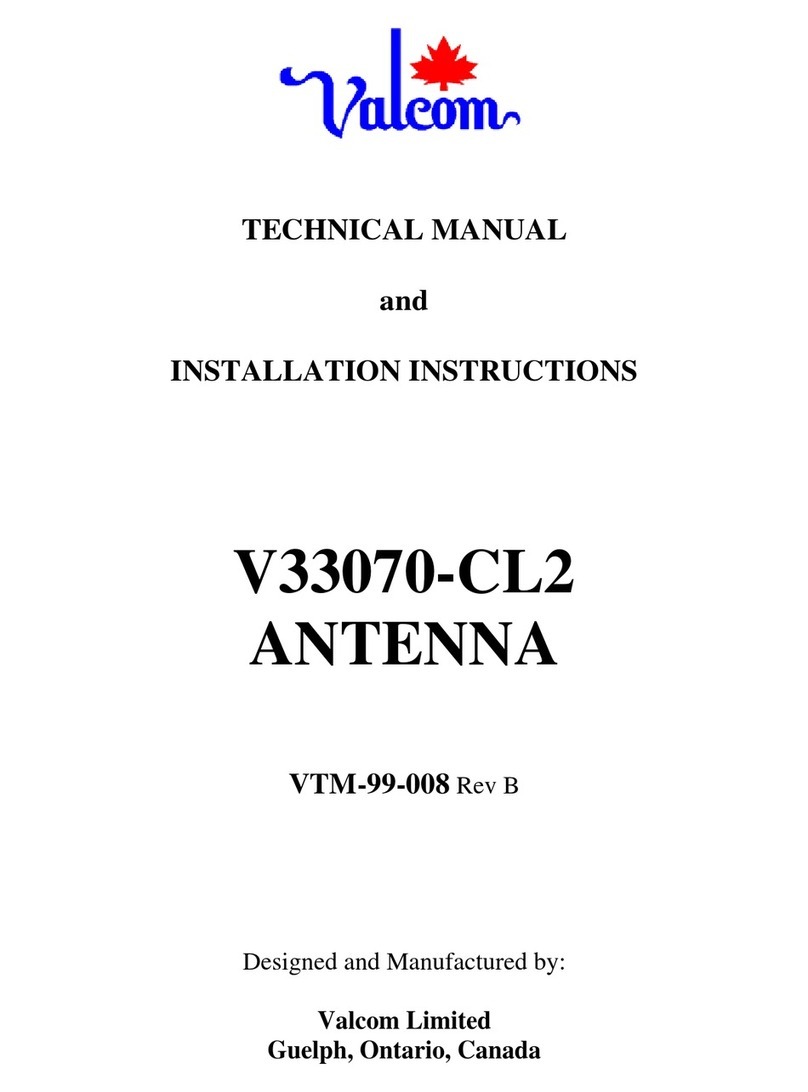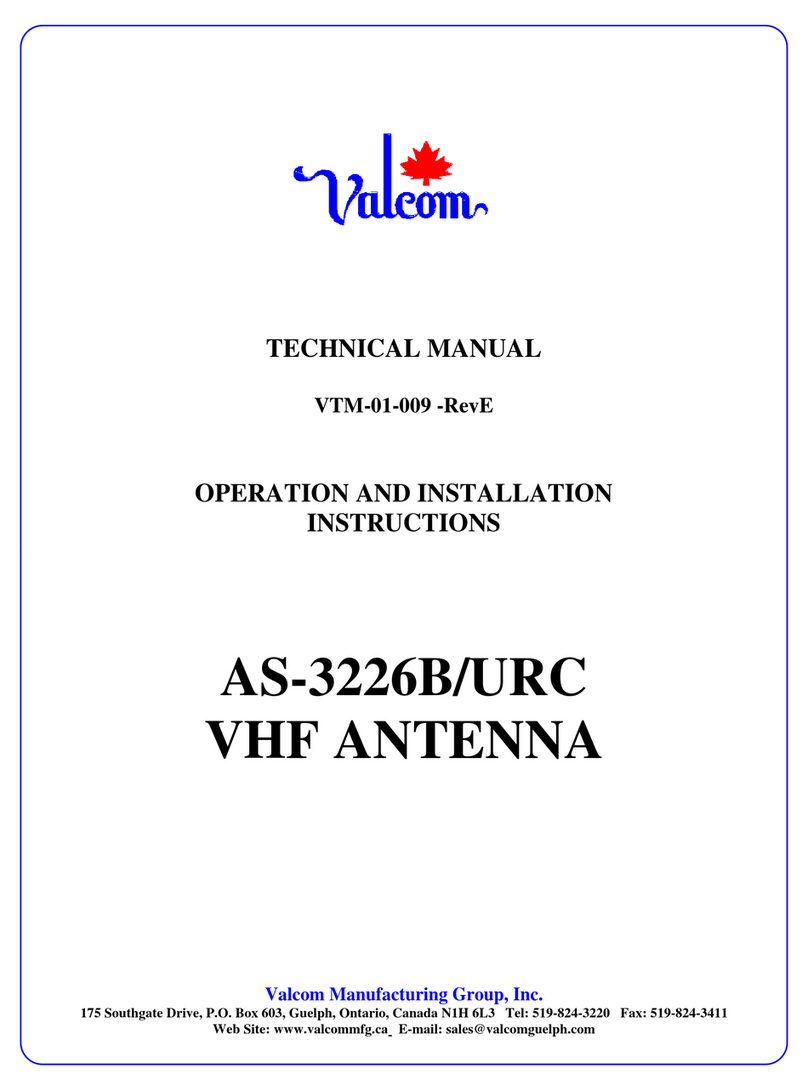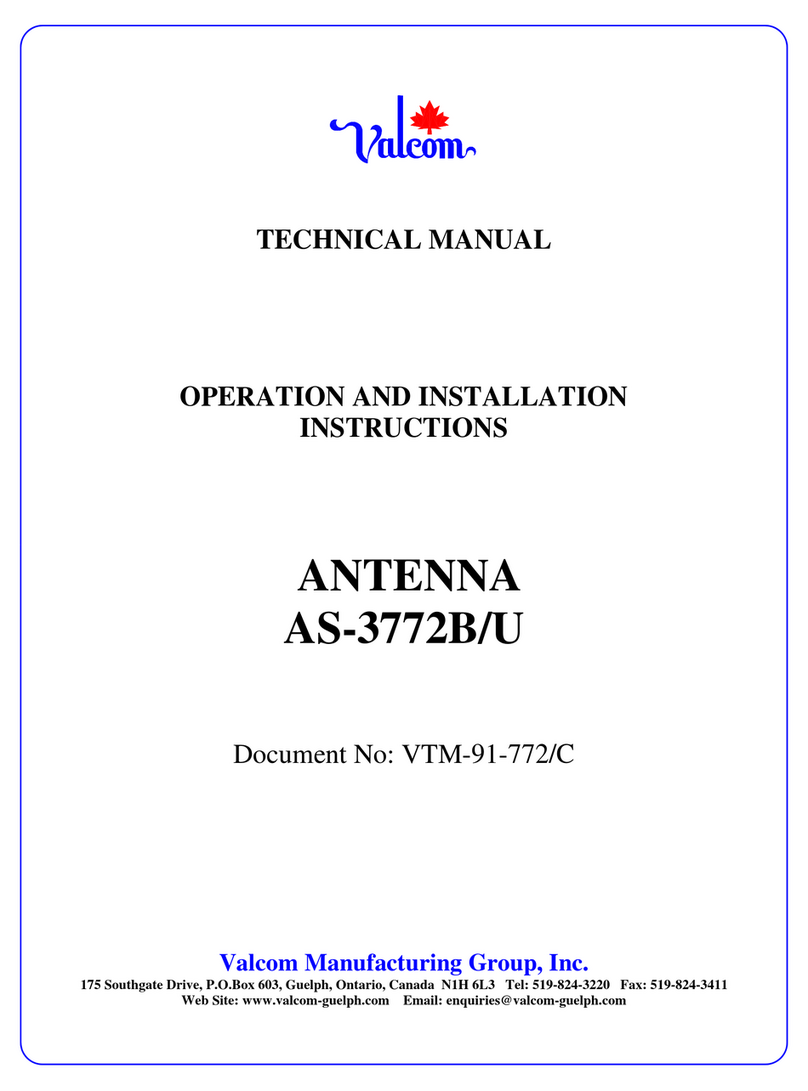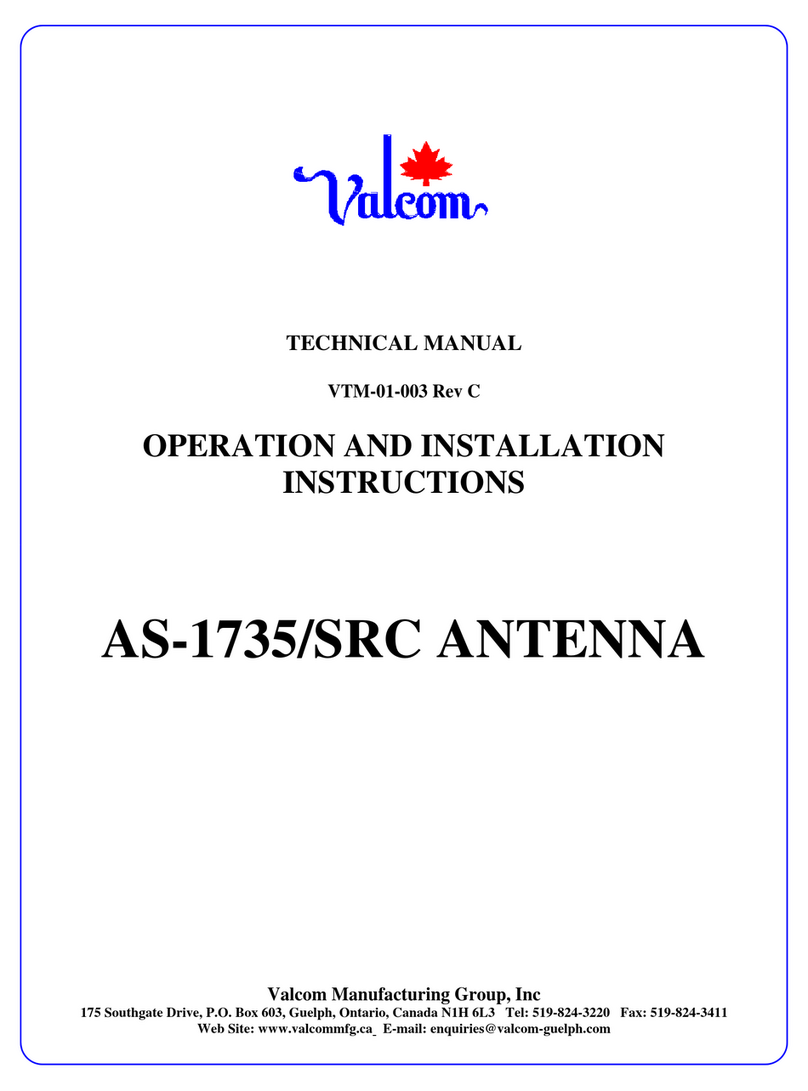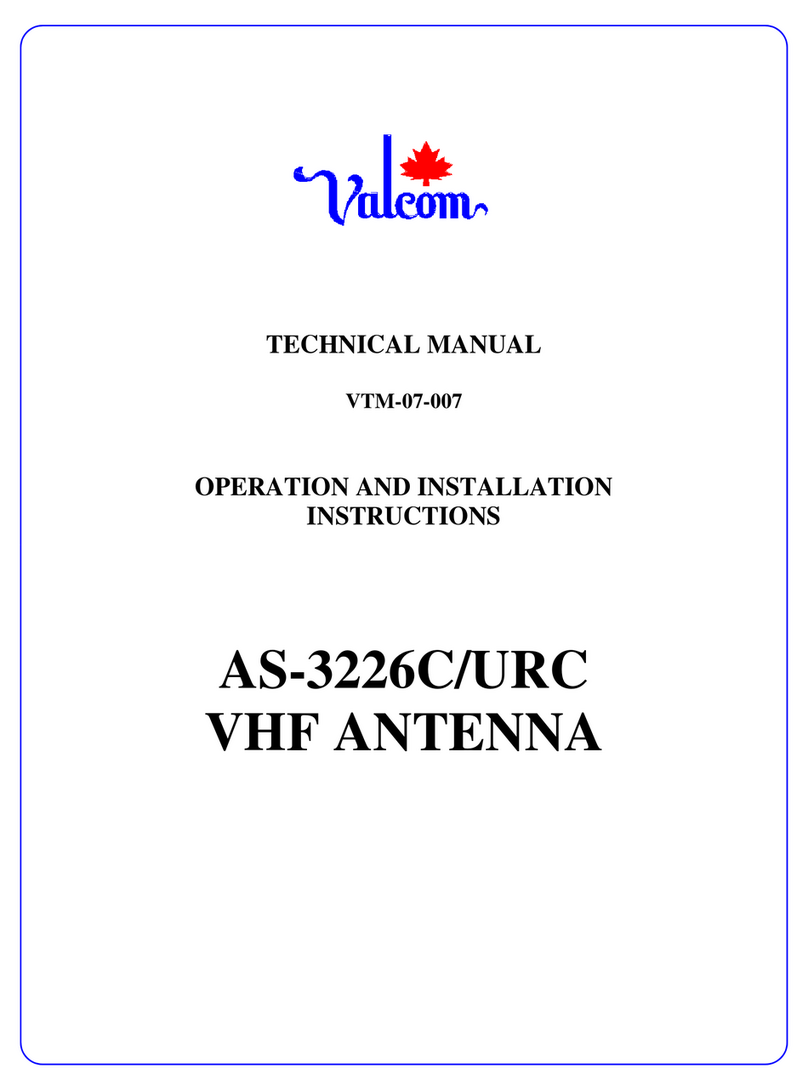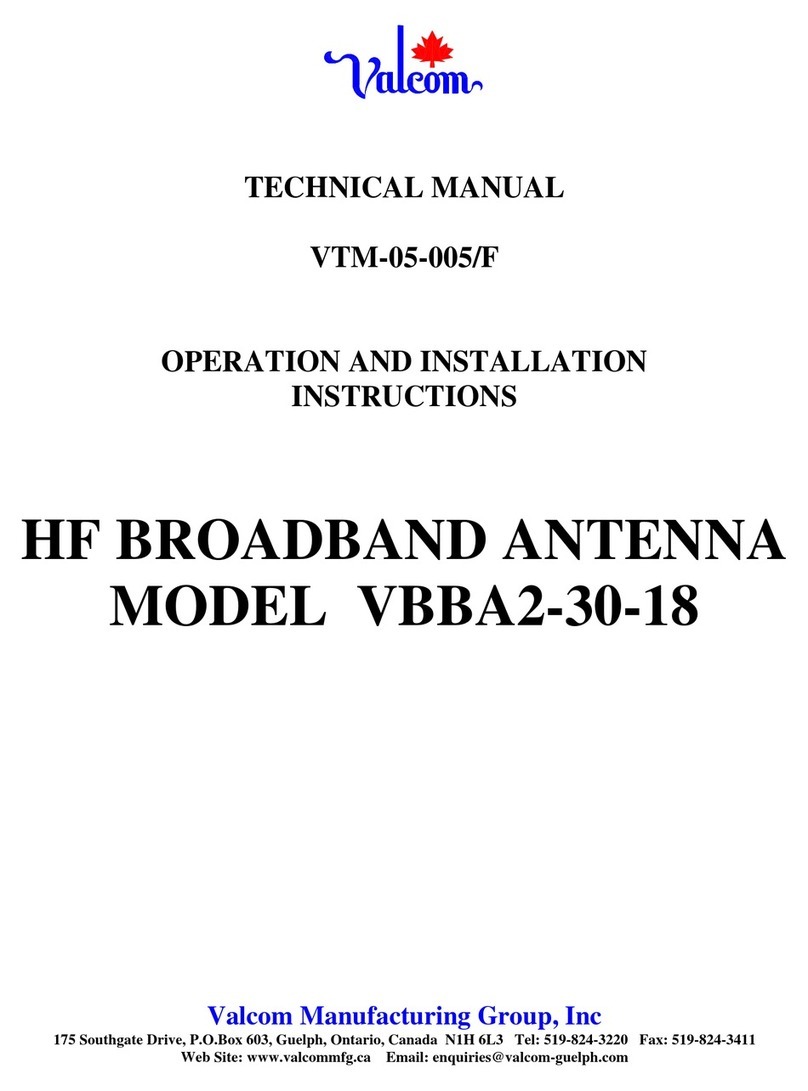
Valcom Manufacturing Group, Inc. 5
Sloping Vee Antenna System Manual
assembly of the Load Resistor and tighten. Carefully unravel the spool of
“Element” wire to its end, while passing across the centre stake.
Step 7. Place the 6th Mast Section onto the Stake Mount Insulator as a temporary
holder. Thread the “Element” wire onto the loop at the top of this Mast
Section. Clip the 3 Upper Guy Rope Assemblies onto the triangular Guy
Rope Collar found on the 6th Mast Section. Unravel the 3 Upper Guy Rope
Assemblies towards the pegs hammered into the ground in steps 2-4. Cinch
the rope assemblies up about 7 feet and hook onto the pegs.
Step 8. Lift the 6th Mast Section off the Insulator Mount and slide the 5th Mast Section
into the bottom of the 6th Section. Secure the two together with the pin.
Step 9. Lift the 5th/ 6th Mast assembly and insert the 4th Mast Section into the bottom
of the 5th Mast Section and secure with the pin. Repeat for the 3rd Mast
Section.
Step 10. Clip the 3 Lower Guy Rope Assemblies onto the triangular Guy Rope Collar
found on the 3rd Mast Section. Unravel the 3 Lower Guy Rope Assemblies
towards the pegs hammered into the ground in steps 2-4. Cinch the rope
assemblies up about 7 feet and hook onto the pegs with the Upper Ropes.
Step 11. Carefully lift the 6th/ 5th/ 4th/ 3rd Mast assembly and insert the 2nd Mast Section
into the bottom of the 3rd Mast Section. Secure the two tegether with the pin.
Repeat for the 1st Mast Section.
Step 12. Place the 6 Mast Sections onto the Stake Mount Insulator and cinch up the six
guy ropes until the mast sits tight and straight.
Step 13. Pull the Element Wire taught and repeat Step 5 except with the Balun
Assembly. The ground side is the side with two lead wires protruding from it.
Set the stake location so that the element wire is not under stress but is not
drooping loose.
Step 14. In areas of poor or no ground, the “Counterpoise” wire may be necessary.
This would be connected to the Fork Terminals found on the ground sides of
the Termination Load Resistor and the balun. The antenna may work best
with the one end of the counterpoise not connected to the ground side of the
Termination Load Resistor. Try both to determine the best results for the
specific installation. The counterpoise is essential in poor ground, dry soil, or
above ground installations. Its length is not critical, and does not have to run
directly under the antenna wire.
Step 15. Connect a suitable coaxial cable to the input connector of the Balun. Length
is not critical, but it should be rated to easily handle the amount of power to
be used and mate with a female N-type cable connector. The antenna is pre-
tuned at the factory for an average VSWR of 1.4:1 with a maximum of 2.0:1,
depending upon the frequency used and surrounding objects, ground
conditions, etc. If you wish to optimize performance, experiment with the
counterpoise and the grounds, taking VSWR readings as a guide.












